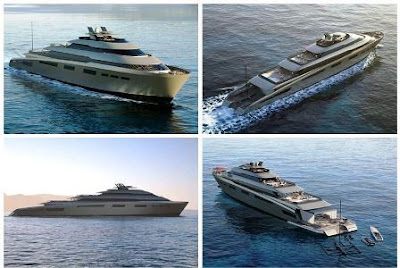In 2016, less than five years from now, the IMO Tier III rules will enter into force, imposing a severe reduction in NOx emissions.
These restrictions will apply to important designated areas, such as the Baltic Sea and the USA coastal waters.
According to marine engine manufacturers, if conventional fuel is used the means for complying with the new regulations cannot be found on the engine itself. Instead, post-treatment of the exhaust gases will probably be the most popular solution.
However, the dedicated urea tank and system will require significant space for the arrangement, and it may also have a negative effect on the exhaust back pressure, especially if combined with soot particle filters.
An alternative answer is to simply change the fuel from diesel to LNG. More than 100 commercial vessels are already successfully operating on gas.
The great benefit of this approach is that no exhaust gas treatment is needed to fulfil the NOx level requirements. At the same time, SOx levels are practically zero, no soot is produced, and CO2 emissions are also significantly reduced.
Fincantieri Yachts decided to explore this idea and began to work on LNG and dual-fuel installations with Wärtsilä.
Fincantieri developed the naval architecture while Wärtsilä was fully responsible for the propulsion system.
Since it was immediately clear that a totally new yacht had to be developed around the concept, Stefano Pastrovich, the designer joined the project to provide exterior and interior drawings.
The result is an innovative 99m concept, the first dual-fuel, IMO Tier III compliant yacht.
Will it catch on? Would someone ever build it? We shall have to wait and see.
Is LNG the Fuel of the Future for Superyachts
For More News Visit www.thehoworths.com



With a reported 10% cost increase for install and added space, it seems likely that more and more will do so on new builds. But refitting an existing yacht would likely seem horribly expensive with having to redesign the diesel only existing space for the LNG tanks and infrastructure for the LNG….then again, if existing yachts do not want to reinstall/convert for LNG and the Tier III comes into affect, I wonder if even more yachts will become permanent fixtures in marinas everywhere as owners simply stop using their yachts…good or bad thing??
As a follow up to my first post I would like to add that one thing that might speed up the implementation of LNG on yachts would be that not only Wärtsilä creates the engines/systems, but also Cat and MTU also creates the same to give all a chance to choose from the dual fuel systems….secondly, let’s hope that by 2016, a well supported worldwide distribution system for LNG is in place so that yacht owners can easily refuel in US coastal waters as well as the Med, North Sea, SE Asia…basically all areas where the modern long range yachts cruise these days..let’s face it, if owners foresee a day when LNG refueling options are few and far between (like they currently are), then I bet that few will pay the extra cash for the LNG system (despite the serious need)…
Cheers,